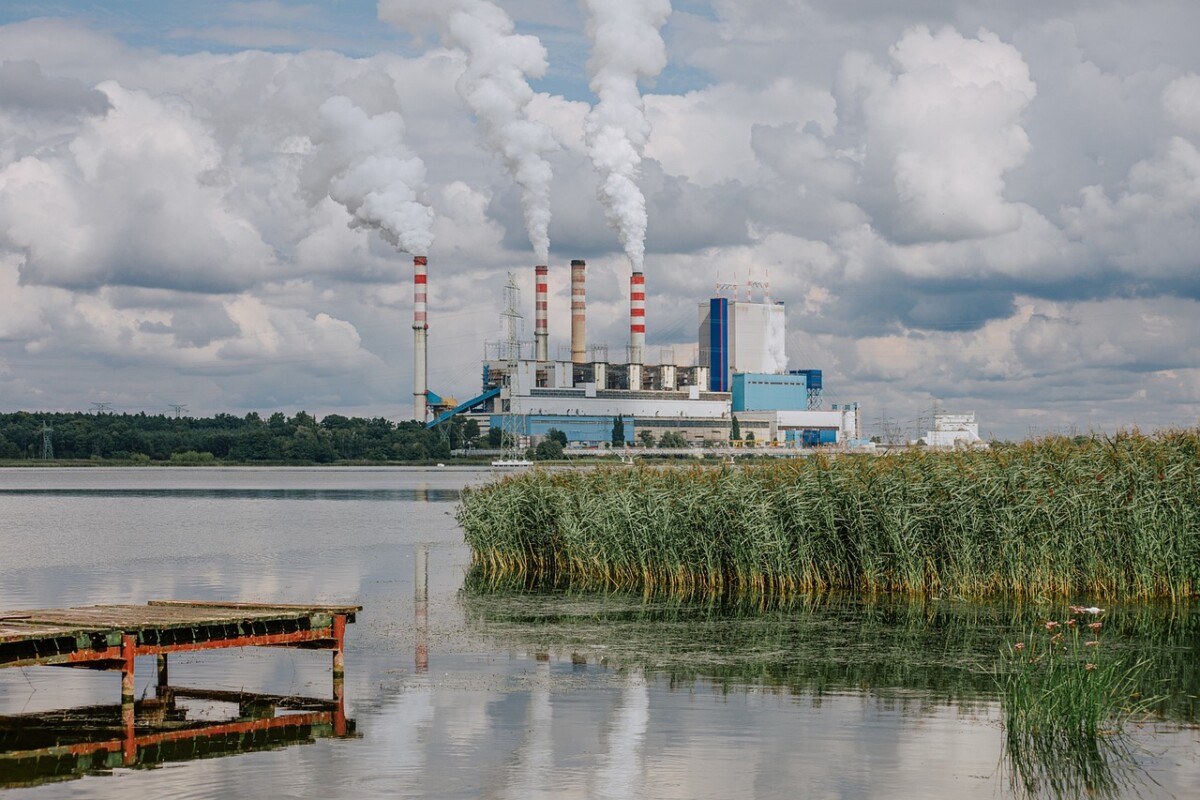What Causes Thermal Pollution?
Thermal pollution, a type of environmental degradation, significantly impacts natural water bodies. This form of pollution occurs when water bodies, such as rivers, lakes, and oceans, experience an unnatural increase in temperature. Therefore thermal pollution can have severe consequences for aquatic ecosystems and the organisms that inhabit them. Hence understanding what causes thermal pollution is crucial for developing effective strategies to mitigate its effects.
What Causes Thermal Pollution?
Human Activities and Industrial Processes
Firstly, a significant cause of thermal pollution is human activities, particularly industrial processes. Factories, power plants, and other industrial facilities often use water to cool machinery. Subsequently discharging the heated water back into nearby water bodies. Furthermore these thermal discharges result in higher temperatures in the affected aquatic environments.
- Power Plants and Nuclear Facilities: Thermal pollution is notably caused by power plants and nuclear facilities. These plants use large quantities of water for cooling, which is then released as heated water into nearby rivers or lakes. As a result, the temperature of the water increases, causing thermal pollution.
- Chemical and Steel Mills: Industrial plants, including chemical and steel mills, also contribute to thermal pollution. The excess heat generated during industrial processes is transferred to the water used for cooling. Leading to elevated water temperatures when discharged.
- Paper Mills: Paper mills, known for their extensive use of water, often release warm water as a byproduct, contributing to thermal pollution.
- Cooling Towers and Artificial Lakes: The use of cooling towers and the creation of artificial lakes for industrial cooling purposes can also lead to thermal pollution. When these structures release warm water into natural water bodies, it disrupts the ambient water temperature.
Environmental and Natural Causes
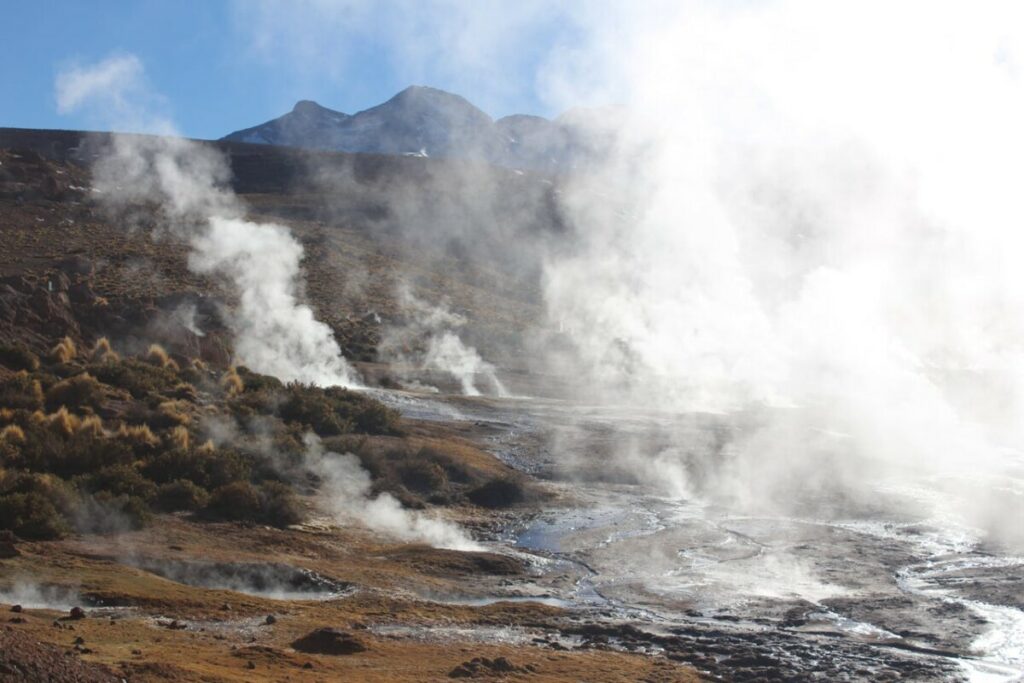
Although human activities are the primary cause of thermal pollution, natural causes also play a role. In fact geothermal vents, hot springs, and even climate change contribute to the temperature increase in water bodies.
- Geothermal Vents and Hot Springs: Geothermal vents and hot springs naturally raise the temperature of nearby water bodies. These natural sources contribute to thermal pollution, although to a lesser extent than industrial activities.
- Climate Change and Global Warming: Climate change and global warming have a significant impact on water temperatures. Warmer temperatures due to global warming increase the temperature of natural bodies of water, exacerbating thermal pollution.
- Soil Erosion: Soil erosion can lead to increased sediment in water bodies. Which absorbs heat and raises the temperature of the water.
Impact on Aquatic Ecosystems
Indeed thermal pollution has severe effects on aquatic ecosystems. When the temperature of water bodies increases, it affects oxygen levels, water quality, and the survival of aquatic life.
- Aquatic Life and Organisms: Warmer water temperatures result in less oxygen dissolved in the water. Thus making it difficult for aquatic animals to survive. In fact aquatic species that are sensitive to temperature changes may experience thermal shock, leading to significant population declines.
- Food Chain Disruption: The impact of thermal pollution extends to the food chain. Changes in the temperature of the water can affect the distribution and abundance of aquatic plants and animals, disrupting the entire food chain.
- Coral Bleaching and Algal Blooms: Higher water temperatures can cause coral bleaching and algal blooms, further degrading aquatic habitats.
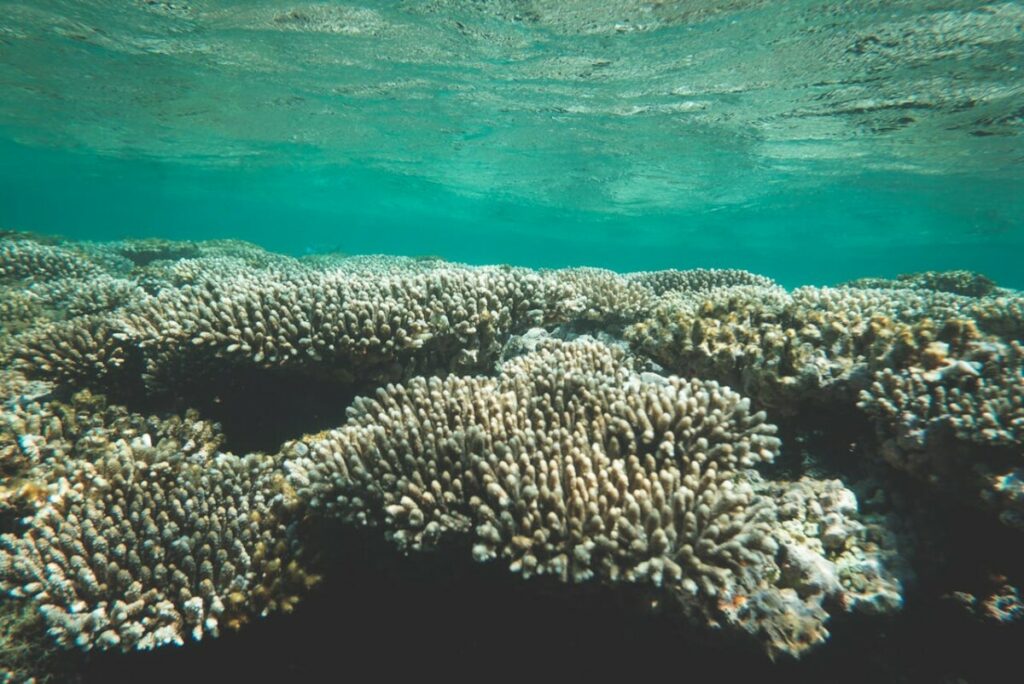
What Causes Thermal Pollution: Frequently Asked Questions
What causes thermal pollution?
Thermal pollution is caused by the discharge of heated water or other liquids into natural water bodies. Leading to an increase in the ambient temperature of these environments. Major sources include industrial activities such as power plants, nuclear facilities, chemical plants, and paper mills. Which use water for cooling and then release it back at higher temperatures. Urban runoff from roads and parking lots, deforestation, soil erosion, and even natural sources like geothermal vents and hot springs can also contribute to thermal pollution.
How do power plants contribute to thermal pollution?
Power plants, particularly thermoelectric and nuclear facilities, are significant contributors to thermal pollution. Also, these plants use large volumes of water to cool their machinery and turbines. Furthermore after absorbing excess heat, the water is discharged back into rivers, lakes, or oceans at elevated temperatures.
This process increases the temperature of the receiving water bodies, leading to thermal pollution. Additionally, coal-fired and natural gas power plants generate substantial waste heat during energy production, which is often released into the environment.
What are the effects of thermal pollution on aquatic life?
Thermal pollution has several detrimental effects on aquatic life, including:
- Reduction in Oxygen Levels: Warmer water holds less dissolved oxygen, making it difficult for fish and other aquatic organisms to survive. This can lead to hypoxic conditions or dead zones.
- Thermal Shock: Sudden changes in water temperature can cause thermal shock, which can be fatal to aquatic species not adapted to rapid temperature fluctuations.
- Disruption of Breeding Cycles: Many aquatic species rely on specific temperature ranges for breeding. Elevated temperatures can disrupt these cycles, leading to reduced reproduction rates and population declines.
- Coral Bleaching: Higher water temperatures can cause corals to expel the symbiotic algae living within them, leading to coral bleaching and potentially coral death.
- Algal Blooms: Warmer water can promote the growth of algae, resulting in harmful algal blooms that deplete oxygen levels and release toxins harmful to aquatic life and humans.
Can natural sources cause thermal pollution?
Yes, natural sources can cause thermal pollution. Geothermal vents and hot springs are natural features that release heat into nearby water bodies, increasing their temperature. Additionally, soil erosion can lead to increased sediment in water bodies, which absorbs heat and raises water temperatures. Although natural sources of thermal pollution tend to have a more localized and less severe impact compared to human-induced sources, they still contribute to the overall phenomenon.
How does climate change affect thermal pollution?
Climate change exacerbates thermal pollution by increasing global temperatures and altering weather patterns. As a result rising air temperatures lead to warmer water temperatures in oceans, rivers, and lakes, intensifying the effects of thermal pollution.
Climate change also contributes to more frequent and severe heatwaves, which can further elevate water temperatures. Additionally, changes in precipitation patterns can affect water flow and exacerbate the warming of water bodies. The combination of these factors makes thermal pollution a growing concern in the context of global climate change, affecting aquatic ecosystems and the species that depend on them.
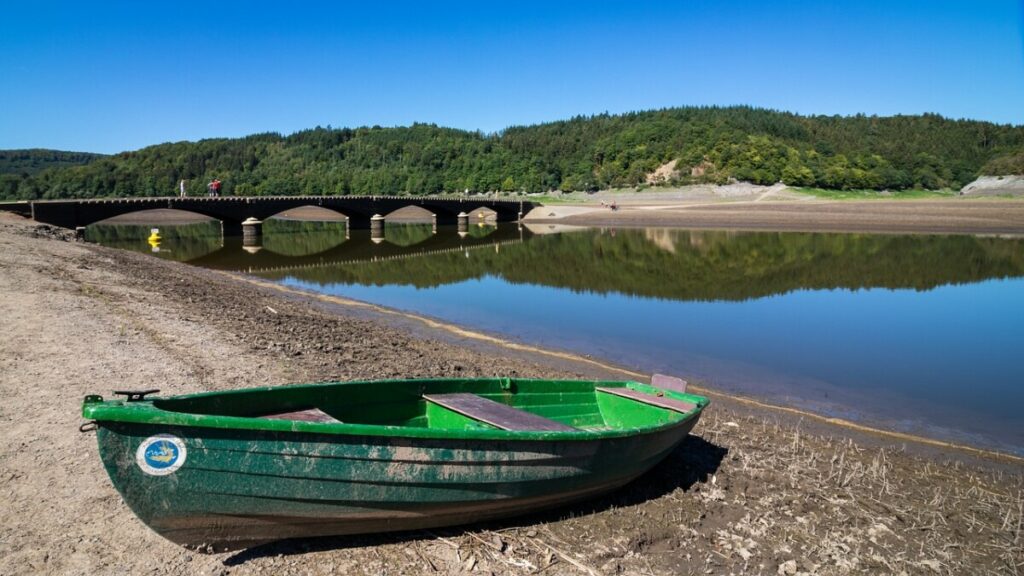
What Causes Thermal Pollution Conclusion
Understanding what causes thermal pollution is essential for mitigating its impact on aquatic ecosystems. Both human activities and natural causes contribute to this environmental issue. By addressing the sources of thermal pollution and implementing effective strategies. The health and balance of aquatic ecosystems can be preserved.
Human Activities and Their Role in Thermal Pollution
Industrial Facilities
Moreover, industrial facilities are major contributors to thermal pollution. These facilities often utilize significant amounts of water for cooling and then discharge heated water back into natural water bodies. This discharge leads to higher temperature levels in these bodies, significantly impacting the surrounding aquatic ecosystems.
- Thermoelectric Power Plants: Thermoelectric power plants, which include coal-fired and natural gas power stations, use vast amounts of water for cooling purposes. The heated water, once used to cool the machinery, is released into nearby rivers or lakes, causing a rise in the ambient water temperature.
- Nuclear Power Plants: Similarly, nuclear power plants contribute to thermal pollution. The cooling process in these plants involves water that is subsequently returned to the environment at a much higher temperature, leading to thermal discharges that affect the local aquatic life.
- Chemical Plants: Chemical plants often release waste heat into nearby water bodies as part of their cooling processes. This increase in temperature can result in significant ecological impacts, affecting water quality and aquatic species.
- Steel Mills: Steel mills also contribute to thermal pollution by discharging hot water into natural bodies of water. The elevated temperatures can disrupt the natural environment, harming aquatic organisms.
- Paper Mills: The paper industry is another contributor to thermal pollution. Paper mills use water extensively in their production processes, often resulting in the discharge of heated water into rivers and lakes.
Urban Areas and Infrastructure
Urban areas and related infrastructure also play a role in thermal pollution. The heat generated from various urban activities can significantly alter the temperature of nearby water bodies.
- Parking Lots and Roads: Heat from asphalt surfaces such as parking lots and roads can increase the temperature of stormwater runoff. This warmer water then flows into natural water bodies, contributing to thermal pollution.
- Urban Heat Islands: Urban heat islands, areas with higher temperatures due to human activities, can lead to increased water temperatures in nearby rivers and lakes. The excess heat generated from buildings and infrastructure is transferred to water bodies, exacerbating thermal pollution.
Effects of Thermal Pollution

Impact on Aquatic Ecosystems
The effects of thermal pollution on aquatic ecosystems are profound and far-reaching. Elevated water temperatures can lead to numerous ecological problems, affecting both the aquatic organisms and their habitats.
- Oxygen Levels: One of the primary impacts of thermal pollution is the reduction of dissolved oxygen levels in the water. Warmer water holds less oxygen, making it difficult for aquatic animals to survive. This can lead to the creation of dead zones, areas with insufficient oxygen to support most marine life.
- Thermal Shock: Aquatic species that are sensitive to temperature changes may experience thermal shock, a sudden and often fatal reaction to rapid temperature fluctuations. This can result in significant declines in population numbers.
- Disruption of Aquatic Life: The higher temperatures can affect the life cycles and behaviors of aquatic organisms. Species that rely on specific temperature ranges for breeding, feeding, and migration may struggle to adapt, leading to a decline in biodiversity.
- Coral Reefs and Algal Blooms: Coral reefs are particularly sensitive to temperature changes. Warmer water can cause coral bleaching, a stress response that expels the symbiotic algae living within the coral tissues, ultimately leading to the death of the coral. Additionally, higher temperatures can promote the growth of algal blooms, which can further reduce oxygen levels and harm aquatic life.
- Food Chain Disruption: The disruption caused by thermal pollution extends to the food chain. Changes in the temperature of the water can affect the distribution and abundance of aquatic plants and animals, disrupting the entire ecosystem’s balance.
What Causes Thermal Pollution: Frequently Asked Questions
How do urban areas contribute to thermal pollution?
Urban areas contribute to thermal pollution through several mechanisms, primarily related to the heat generated from human activities and infrastructure. Key contributors include:
- Stormwater Runoff: Urban surfaces like roads, parking lots, and rooftops absorb heat from the sun. During rain events, this heat is transferred to stormwater runoff, which then flows into nearby rivers, lakes, and streams, raising their temperatures.
- Urban Heat Islands: Cities tend to be warmer than their rural surroundings due to the concentration of buildings, concrete, and asphalt, a phenomenon known as the urban heat island effect. This increased ambient temperature can elevate the temperature of water bodies within or near urban areas.
- Industrial Discharges: Industrial facilities located in urban areas often discharge heated water used for cooling machinery directly into local water bodies, contributing significantly to thermal pollution.
- Reduced Vegetation: Urbanization often leads to the reduction of natural vegetation, which normally helps shade and cool water bodies. The loss of these natural buffers exacerbates the warming of nearby water sources.
What is the impact of thermal pollution on coral reefs?
Thermal pollution severely impacts coral reefs, which are highly sensitive to temperature changes. Key effects include:
- Coral Bleaching: Elevated water temperatures cause corals to expel the symbiotic algae (zooxanthellae) living in their tissues. This process, known as coral bleaching, deprives corals of essential nutrients provided by the algae, leading to weakened corals and increased mortality rates if stressful conditions persist.
- Reduced Growth and Reproduction: Prolonged exposure to higher temperatures can impair coral growth and reproduction. Corals may become more susceptible to diseases, and their ability to recover from damage is diminished.
- Ecosystem Disruption: Coral reefs support a diverse range of marine life. The decline of coral health due to thermal pollution disrupts the entire ecosystem, affecting fish populations and other marine organisms that depend on the reef for food and habitat.
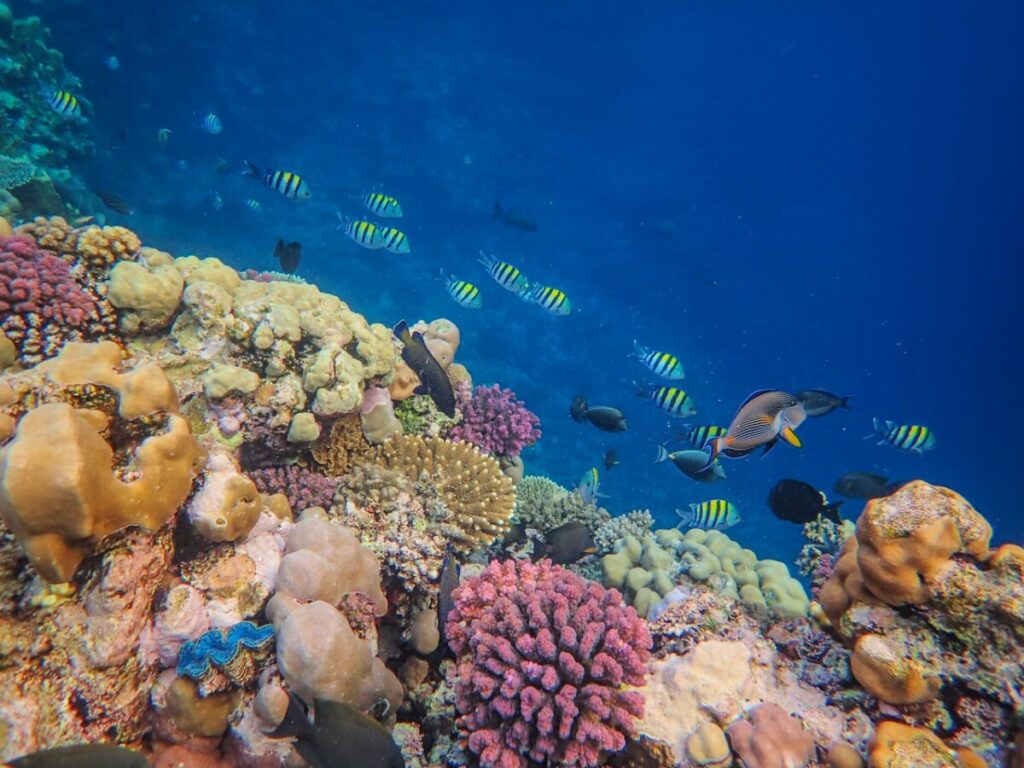
Why is dissolved oxygen important for aquatic life?
Dissolved oxygen is crucial for the survival of aquatic life for several reasons:
- Respiration: Aquatic organisms, including fish, invertebrates, and microorganisms, rely on dissolved oxygen for respiration. It is essential for their metabolic processes and energy production.
- Biodiversity: Adequate oxygen levels support diverse and healthy aquatic ecosystems. Different species have varying oxygen requirements, and a reduction in dissolved oxygen can lead to a decline in species diversity.
- Decomposition: Oxygen is necessary for the decomposition of organic matter by aerobic bacteria. This process helps maintain water quality by breaking down waste products and preventing the accumulation of harmful substances.
- Food Chain Stability: Many aquatic species that form the base of the food chain, such as phytoplankton and zooplankton, require dissolved oxygen to thrive. A reduction in these populations can have cascading effects on higher trophic levels.
How does thermal shock affect aquatic organisms?
Thermal shock occurs when aquatic organisms experience sudden and drastic changes in water temperature. The effects on aquatic organisms can be severe:
- Physiological Stress: Rapid temperature changes can cause physiological stress in aquatic animals, disrupting their metabolic processes and impairing their ability to function normally.
- Increased Mortality: Thermal shock can lead to immediate mortality for many species, especially those unable to quickly adapt to sudden temperature fluctuations. This is particularly true for temperature-sensitive species.
- Behavioral Changes: Aquatic organisms may exhibit altered behaviors in response to thermal shock, such as changes in feeding, breeding, and migratory patterns. These changes can reduce their survival and reproductive success.
- Susceptibility to Disease: Stressed organisms are more susceptible to diseases and parasites, further increasing the risk of mortality and population declines.
Can thermal pollution lead to dead zones?
Yes, thermal pollution can lead to the formation of dead zones. These are areas in water bodies where oxygen levels are so low that most marine life cannot survive. The process occurs as follows:
- Reduced Oxygen Solubility: Warmer water holds less dissolved oxygen, leading to lower oxygen levels available for aquatic organisms.
- Increased Metabolic Rates: Higher temperatures can increase the metabolic rates of aquatic organisms, leading to higher oxygen consumption rates, which can deplete available oxygen faster.
- Algal Blooms: Elevated temperatures can promote the growth of algae. When these algae die and decompose, the process consumes large amounts of oxygen, further reducing oxygen levels in the water.
- Hypoxic Conditions: The combination of reduced oxygen solubility, increased metabolic demand, and oxygen consumption by decomposing algae can create hypoxic conditions. These low-oxygen areas become dead zones where aquatic life cannot be sustained.
Dead zones disrupt aquatic ecosystems, leading to the loss of biodiversity and the collapse of local fisheries, significantly impacting the environment and human economies.
What Causes Thermal Pollution Conclusion
Thermal pollution poses a significant threat to aquatic ecosystems and biodiversity. Understanding what causes thermal pollution, including human activities and natural sources, is crucial for developing strategies to mitigate its effects. By addressing the sources and implementing effective solutions, it is possible to protect and preserve aquatic environments for future generations.
Causes of Thermal Pollution in Natural Systems
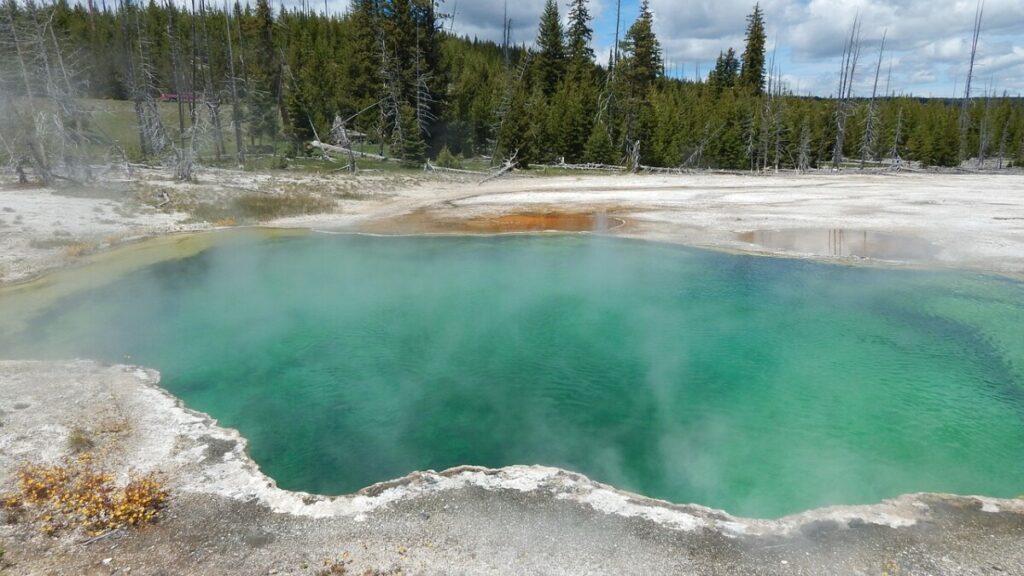
Natural Sources of Thermal Pollution
While human activities are often highlighted, natural sources can also cause thermal pollution. Understanding these natural causes is essential for a comprehensive view of the issue.
- Geothermal Vents and Hot Springs: Naturally occurring geothermal vents and hot springs can increase the temperature of nearby water bodies. These natural heat sources contribute to thermal pollution, although their impact is generally localized compared to industrial sources.
- Climate Change: Global warming, driven by climate change, is a significant natural cause of thermal pollution. Rising global temperatures lead to warmer water temperatures in oceans, lakes, and rivers, exacerbating the effects of thermal pollution.
- Soil Erosion: Soil erosion, often a result of deforestation and agricultural practices, can increase the sediment load in water bodies. Sediments absorb and retain heat, raising the temperature of the water and contributing to thermal pollution.
Industrial Processes and Their Impacts
Further examining industrial processes provides insight into how these activities contribute to thermal pollution. These processes are often unavoidable in modern society, yet they have substantial environmental consequences.
- Fossil Fuel Power Plants: Coal-fired and natural gas power plants are major contributors to thermal pollution. These plants use water to cool their systems, releasing heated water back into the environment. This process increases the temperature of natural water bodies, impacting aquatic ecosystems.
- Nuclear Plants: Nuclear power plants, while producing clean energy, also contribute to thermal pollution. The cooling water used in these plants is discharged at higher temperatures, affecting nearby aquatic habitats.
- Steel and Chemical Plants: Industrial plants, such as steel mills and chemical plants, generate significant waste heat during production processes. This heated water, when released into rivers or lakes, elevates the temperature of these water bodies.
- Paper Mills: The paper production industry also plays a role in thermal pollution. Paper mills use large amounts of water for processing and release heated water as a byproduct.
- Cooling Towers: The use of cooling towers in various industries can lead to thermal discharges. The water used to cool machinery is often released at higher temperatures into nearby water bodies.
Effects on Aquatic Life
Thermal pollution has profound effects on aquatic life and ecosystems. The elevated temperatures disrupt the natural balance and can lead to long-term environmental damage.
- Reduction in Oxygen Levels: Warmer water holds less oxygen than cooler water. This reduction in dissolved oxygen levels makes it difficult for fish and other aquatic organisms to breathe, leading to hypoxic conditions, also known as dead zones.
- Thermal Shock: Sudden changes in water temperature can cause thermal shock in aquatic animals. This phenomenon can be fatal, particularly for species that are not adaptable to rapid temperature fluctuations.
- Disruption of Breeding Cycles: Many aquatic species rely on specific temperature ranges for breeding. Thermal pollution can disrupt these cycles, leading to declines in population numbers and biodiversity.
- Coral Bleaching: Higher water temperatures can cause coral bleaching, a stress response in corals that leads to the expulsion of symbiotic algae. This process weakens the corals and can lead to large-scale die-offs.
- Algal Blooms: Elevated temperatures can promote the growth of algae, leading to harmful algal blooms. These blooms deplete oxygen levels further and release toxins that can harm aquatic life and human health.
Preventing and Mitigating Thermal Pollution
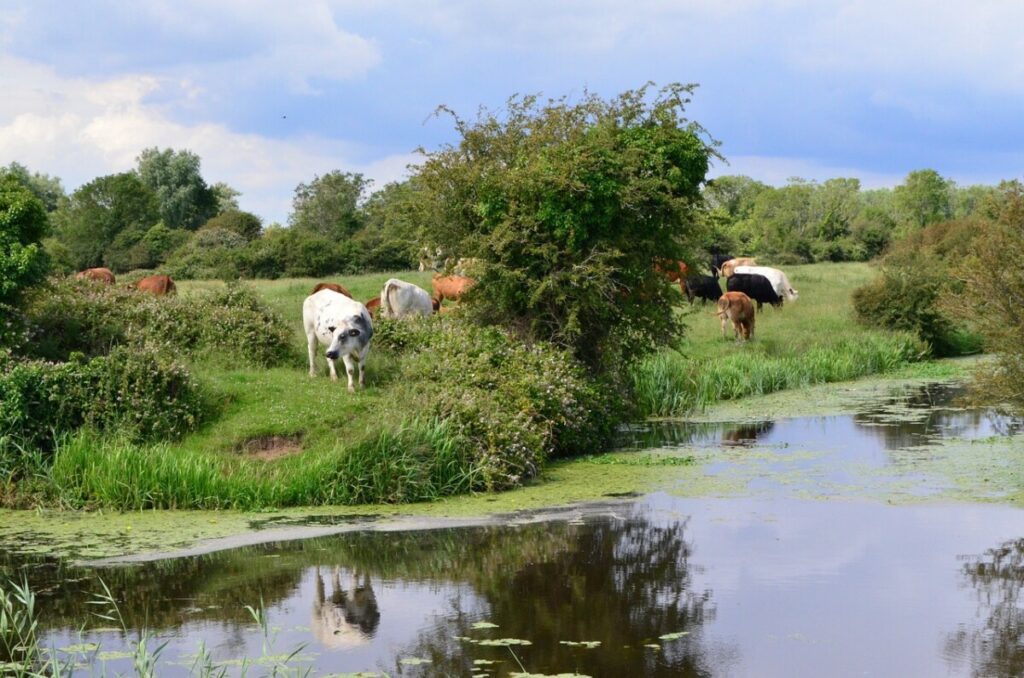
Addressing thermal pollution requires a multifaceted approach that involves both technological innovations and policy measures.
- Use of Cooling Ponds and Towers: Implementing cooling ponds and towers can help manage the temperature of water discharged from industrial facilities. These structures allow heat to dissipate before the water is released into natural bodies.
- Waste Heat Recovery Systems: Industries can adopt waste heat recovery systems to utilize the excess heat produced during their processes. This approach not only reduces thermal pollution but also improves energy efficiency.
- Stricter Regulations: Governments can implement stricter regulations on thermal discharges from industrial plants. Setting temperature limits for discharged water can help protect aquatic ecosystems.
- Promoting Renewable Energy: Transitioning to renewable energy sources, such as solar and wind power, can reduce reliance on thermal power plants, thereby decreasing thermal pollution.
- Restoration of Natural Vegetation: Restoring natural vegetation along water bodies can reduce soil erosion and help maintain cooler water temperatures. Riparian buffers can also provide shade, mitigating the impact of thermal pollution.
What Causes Thermal Pollution: Frequently Asked Questions
How does soil erosion contribute to thermal pollution?
Soil erosion contributes to thermal pollution in several ways:
- Increased Sediment Load: Erosion causes soil and sediment to wash into rivers, lakes, and other water bodies. This increased sediment load can absorb and retain heat, leading to a rise in water temperature.
- Reduced Water Clarity: Sediments suspended in the water reduce its clarity. This turbidity can affect the water’s ability to reflect sunlight, causing it to absorb more heat and thus increase in temperature.
- Disruption of Riparian Vegetation: Soil erosion often leads to the loss of riparian vegetation, which provides shade and helps maintain cooler water temperatures. Without this natural buffer, water bodies are more exposed to direct sunlight, further elevating temperatures.
- Habitat Degradation: The deposition of eroded sediments can degrade aquatic habitats, affecting the species that live there. The altered thermal regime can exacerbate this habitat degradation by creating conditions unsuitable for many aquatic organisms.
What are some natural sources of thermal pollution?
Natural sources of thermal pollution include:
- Geothermal Vents and Hot Springs: These natural features release heat into nearby water bodies, increasing their temperature. Geothermal activity can significantly raise water temperatures in localized areas.
- Climate Change: Global warming, a result of natural and anthropogenic factors, leads to increased air and water temperatures worldwide. This broad-scale temperature increase contributes to thermal pollution in various water bodies.
- Soil Erosion: As mentioned, natural processes of soil erosion can increase sediment loads in water bodies, which can retain and amplify heat, raising water temperatures.
- Natural Weather Patterns: Natural variations in weather, such as prolonged periods of high temperatures or droughts, can also contribute to elevated water temperatures in lakes, rivers, and streams.
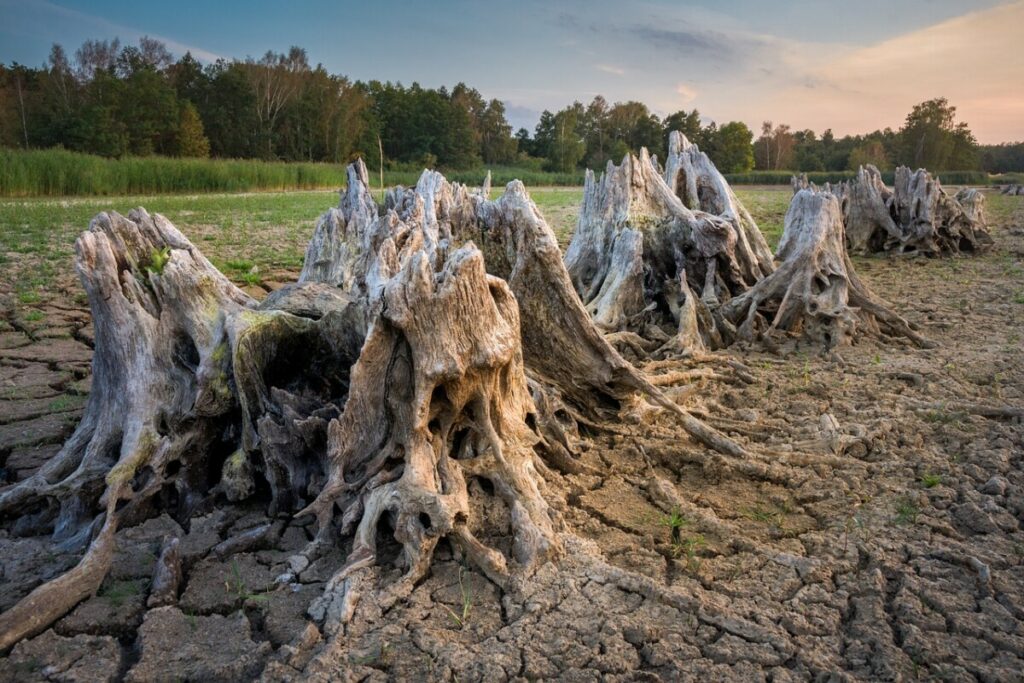
Can industrial cooling towers help reduce thermal pollution?
Yes, industrial cooling towers can help reduce thermal pollution by:
- Heat Dissipation: Cooling towers work by dissipating heat from industrial processes into the atmosphere rather than discharging it into nearby water bodies. This process helps to cool the water before it is released.
- Reducing Thermal Discharges: By lowering the temperature of the water used for cooling machinery, cooling towers minimize the thermal impact on aquatic ecosystems when this water is eventually released into the environment.
- Energy Efficiency: Modern cooling towers are designed to be energy-efficient, reducing the overall thermal load and improving the sustainability of industrial operations.
- Enhanced Water Management: Cooling towers often incorporate systems that recycle and reuse water, reducing the volume of heated water discharged and thus lessening the thermal pollution impact.
How do algal blooms affect aquatic ecosystems?
Algal blooms, often exacerbated by thermal pollution, have several negative effects on aquatic ecosystems:
- Oxygen Depletion: Algal blooms can lead to hypoxia, or low oxygen levels, as algae consume large amounts of oxygen during decomposition. This oxygen depletion creates dead zones where aquatic life cannot survive.
- Toxin Production: Some algal blooms produce harmful toxins that can kill fish, shellfish, and other aquatic organisms. These toxins can also pose significant health risks to humans who come into contact with contaminated water or consume affected seafood.
- Disruption of Food Chains: Algal blooms can alter the availability of food resources, disrupting the balance of aquatic food chains. This can lead to declines in populations of fish and other organisms that depend on affected species for food.
- Habitat Alteration: Dense algal blooms can block sunlight from reaching submerged vegetation, affecting photosynthesis and leading to the death of aquatic plants. This loss of habitat can have cascading effects on the entire ecosystem.
What are some policy measures to prevent thermal pollution?
To prevent thermal pollution, several policy measures can be implemented:
- Regulating Industrial Discharges: Governments can establish and enforce regulations that limit the temperature of water discharged from industrial facilities. These regulations can include setting maximum allowable temperatures for effluents.
- Promoting Cooling Technologies: Policies that incentivize the adoption of advanced cooling technologies, such as cooling towers and waste heat recovery systems, can help reduce the thermal load from industrial processes.
- Enhancing Monitoring and Reporting: Implementing robust monitoring and reporting requirements for industries can ensure compliance with thermal discharge regulations. Continuous monitoring can help identify and address thermal pollution issues promptly.
- Encouraging Renewable Energy: Transitioning to renewable energy sources like solar, wind, and hydroelectric power can reduce reliance on thermal power plants, thereby decreasing thermal pollution.
- Protecting Riparian Zones: Policies that promote the protection and restoration of riparian zones can help maintain natural buffers that shade water bodies and reduce temperature increases. Riparian vegetation can also help filter runoff and reduce sediment loads.
- Public Education and Awareness: Raising public awareness about the causes and effects of thermal pollution can foster community support for policies and practices that protect aquatic environments. Education programs can inform the public and industries about best practices to reduce thermal pollution.
By implementing these measures, governments and communities can work together to mitigate thermal pollution and protect aquatic ecosystems.
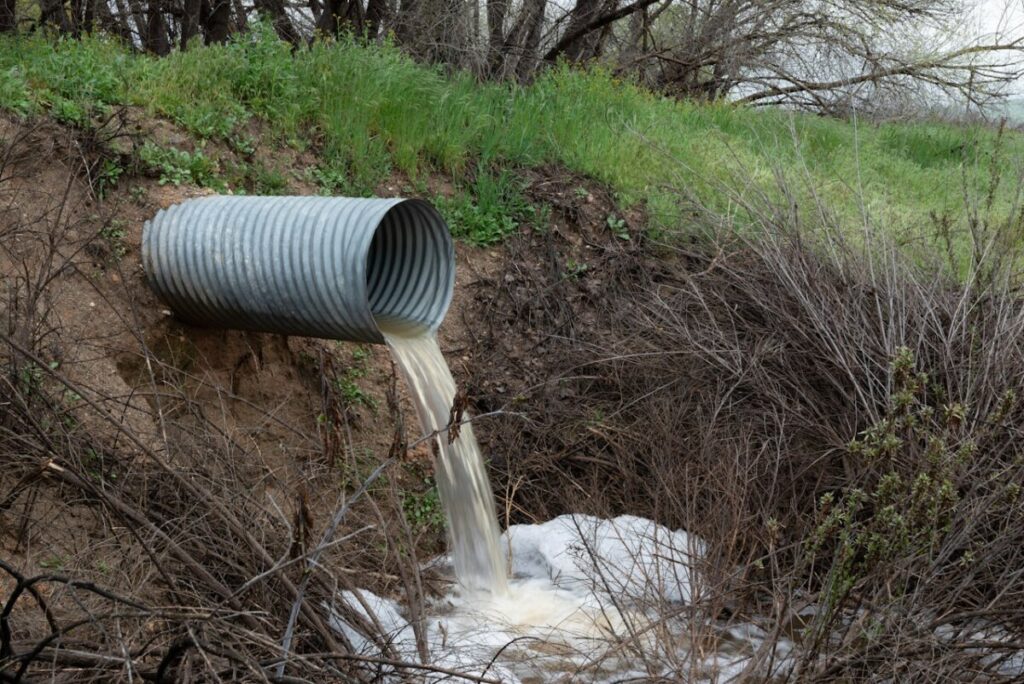
What Causes Thermal Pollution Conclusion
Thermal pollution, driven by both human activities and natural causes, poses significant challenges to aquatic ecosystems. Understanding what causes thermal pollution is crucial for developing effective mitigation strategies. By addressing industrial practices, promoting renewable energy, and implementing strict regulations, the adverse effects of thermal pollution can be minimized. Protecting our water bodies is essential for preserving biodiversity and ensuring the health of aquatic environments.
The Broader Implications of Thermal Pollution
Impact on Marine Ecosystems
Thermal pollution’s impact extends beyond freshwater environments, affecting marine ecosystems as well. The interconnectedness of these systems means that changes in temperature can have widespread repercussions.
- Marine Life and Coral Reefs: Marine animals, including fish, crustaceans, and coral species, are highly sensitive to temperature changes. Coral reefs, in particular, suffer from bleaching events when exposed to elevated water temperatures. This process disrupts the symbiotic relationship between corals and the algae that live within them, leading to large-scale coral die-offs and the degradation of marine habitats.
- Algal Blooms in Marine Environments: Similar to freshwater systems, marine ecosystems can experience harmful algal blooms due to thermal pollution. These blooms can produce toxins that are harmful to marine life and humans, disrupt food chains, and deplete oxygen levels in the water.
Effects on Human Health and Economy
The implications of thermal pollution are not limited to ecological impacts; they also affect human health and economic activities.
- Human Health Risks: Harmful algal blooms resulting from thermal pollution can contaminate drinking water sources, posing health risks such as respiratory issues and skin irritations. Additionally, the consumption of fish and shellfish from affected areas can lead to serious health problems.
- Economic Impact on Fisheries: Thermal pollution can affect commercial and recreational fishing industries. Changes in water temperature and oxygen levels can reduce fish populations, impacting livelihoods and local economies that depend on fishing.
- Tourism and Recreation: Areas known for their natural beauty and recreational activities, such as fishing and boating, can suffer from reduced tourism due to the adverse effects of thermal pollution. The degradation of water quality and aquatic habitats can deter visitors, leading to economic losses for communities reliant on tourism.
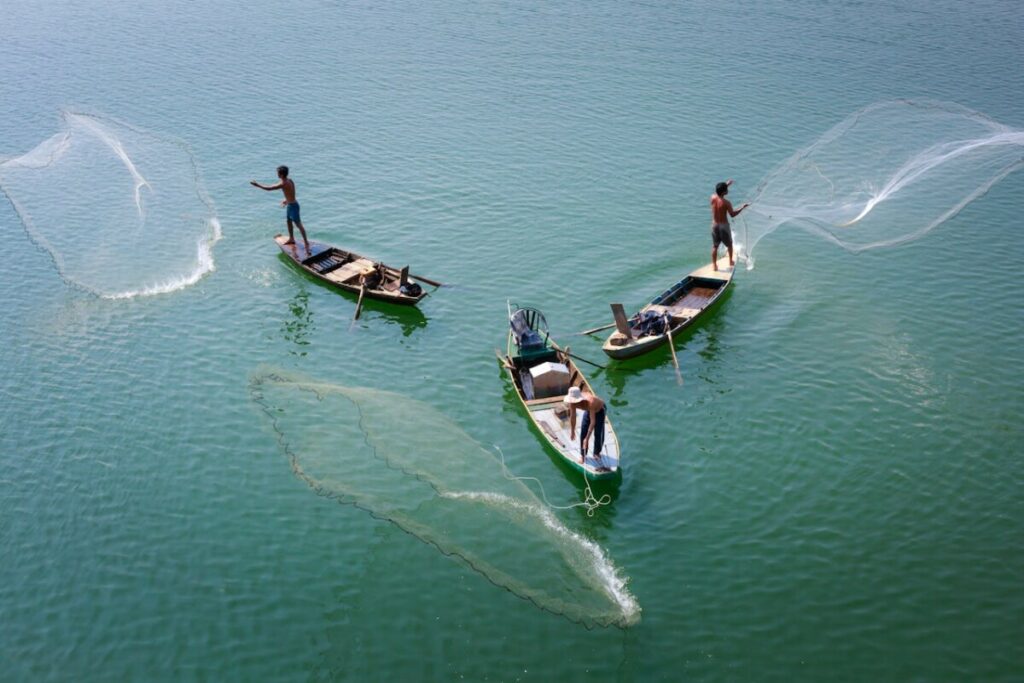
Strategies for Mitigating Thermal Pollution
Efforts to mitigate thermal pollution require cooperation between industries, governments, and communities. Several strategies can be employed to address this issue effectively.
- Implementation of Green Infrastructure: Urban areas can reduce thermal pollution by incorporating green infrastructure, such as green roofs, vegetated swales, and permeable pavements. These solutions help manage stormwater runoff and reduce heat absorption from urban surfaces.
- Enhanced Waste Heat Utilization: Industries can invest in technologies that capture and repurpose waste heat. For instance, waste heat recovery systems can convert excess heat into energy, thereby reducing the amount of heated water discharged into the environment.
- Monitoring and Regulation: Continuous monitoring of water temperatures and stringent regulation of industrial discharges are crucial. Establishing maximum temperature thresholds for industrial effluents can help protect aquatic ecosystems.
- Public Awareness and Education: Raising awareness about the causes and effects of thermal pollution is essential for fostering community engagement and support for mitigation efforts. Educational programs can inform the public about the importance of maintaining healthy water bodies and the actions they can take to reduce thermal pollution.
- Promoting Sustainable Practices: Encouraging industries to adopt sustainable practices and transition to cleaner energy sources can significantly reduce thermal pollution. Policies that incentivize the use of renewable energy and penalize excessive thermal discharges can drive this change.
What Causes Thermal Pollution: Frequently Asked Questions
How does thermal pollution affect human health?
Thermal pollution affects human health in several significant ways:
- Contaminated Drinking Water: Elevated water temperatures can promote the growth of harmful microorganisms and algae in water bodies. These microorganisms can produce toxins that contaminate drinking water sources, posing health risks such as gastrointestinal illnesses, neurological disorders, and skin irritations.
- Harmful Algal Blooms: The increased likelihood of algal blooms due to warmer water temperatures can release toxins that affect both aquatic life and humans. People who swim in or consume water contaminated with these toxins can suffer from various health problems, including respiratory issues, liver damage, and skin rashes.
- Food Safety: Fish and shellfish from waters affected by thermal pollution and harmful algal blooms can accumulate toxins. Consuming contaminated seafood can lead to serious health conditions such as shellfish poisoning and other toxic effects.
- Recreational Risks: Thermal pollution can degrade the quality of water in recreational areas, posing risks to those who swim, fish, or engage in other water-based activities. Health risks include infections and exposure to toxins released by harmful algae.
What economic impacts does thermal pollution have on fisheries?
Thermal pollution has several economic impacts on fisheries:
- Decline in Fish Populations: Elevated water temperatures can reduce oxygen levels, leading to hypoxia and the death of fish. This decline in fish populations can significantly impact commercial and recreational fisheries, reducing catch rates and affecting the livelihoods of fishermen.
- Decreased Biodiversity: Changes in water temperature can alter the composition of aquatic ecosystems, leading to a loss of biodiversity. The decline of key species can disrupt the food chain and negatively impact fisheries that rely on a diverse range of species.
- Costs of Mitigation: Fisheries may incur additional costs to mitigate the effects of thermal pollution, such as investing in new equipment or altering fishing practices to adapt to changing conditions.
- Market Impact: Reduced fish stocks can lead to higher prices for consumers and a decrease in the availability of certain fish species. This market impact can affect both local economies and international trade.
How can green infrastructure help mitigate thermal pollution?
Green infrastructure can help mitigate thermal pollution through various mechanisms:
- Stormwater Management: Green infrastructure solutions, such as green roofs, permeable pavements, and vegetated swales, help manage stormwater runoff. By reducing the volume and speed of runoff, these systems lower the temperature of water entering natural bodies, mitigating thermal pollution.
- Natural Cooling: Planting trees and vegetation along water bodies provides shade, helping to cool the water and maintain more stable temperatures. Riparian buffers act as natural insulators, reducing the heat absorbed by water bodies.
- Erosion Control: Green infrastructure helps prevent soil erosion, which can increase sediment loads in water bodies and contribute to thermal pollution. Stabilizing soils with vegetation reduces the amount of heat-retaining sediment entering the water.
- Water Filtration: Vegetated areas and wetlands can filter pollutants and sediments from runoff before they reach water bodies. This filtration process helps maintain water quality and temperature.

What role do waste heat recovery systems play in reducing thermal pollution?
Waste heat recovery systems play a crucial role in reducing thermal pollution by:
- Energy Efficiency: These systems capture and reuse waste heat generated from industrial processes, converting it into useful energy rather than discharging it into the environment. This reduces the amount of heated water released into natural water bodies.
- Lowering Thermal Discharges: By repurposing waste heat for other industrial processes, heating buildings, or generating electricity, these systems minimize the thermal load on nearby water bodies.
- Environmental Protection: Reducing thermal discharges helps protect aquatic ecosystems from the adverse effects of elevated temperatures. This promotes healthier aquatic environments and biodiversity.
- Cost Savings: Implementing waste heat recovery systems can lead to significant cost savings for industries by improving energy efficiency and reducing the need for additional cooling infrastructure.
Why is public awareness important in addressing thermal pollution?
Public awareness is crucial in addressing thermal pollution for several reasons:
- Community Engagement: Educating the public about the causes and effects of thermal pollution fosters community involvement in conservation efforts. Informed citizens are more likely to support and participate in initiatives to protect water bodies.
- Policy Support: Public awareness can drive political and regulatory action. When the public understands the importance of addressing thermal pollution, they are more likely to advocate for and support policies that mitigate its impact.
- Behavioral Change: Awareness campaigns can encourage individuals and businesses to adopt practices that reduce thermal pollution. This includes conserving energy, supporting renewable energy sources, and reducing runoff from urban areas.
- Funding and Resources: Increased public awareness can lead to greater funding and resources for research and projects aimed at mitigating thermal pollution. Public support can help secure financial backing for innovative solutions and infrastructure improvements.
- Long-Term Sustainability: Educating the public helps ensure long-term commitment to environmental protection. Awareness fosters a culture of sustainability, where individuals and communities prioritize actions that safeguard natural resources and ecosystems.
What Causes Thermal Pollution Conclusion
In conclusion, thermal pollution is a multifaceted environmental issue with far-reaching effects on aquatic ecosystems, human health, and the economy. Understanding what causes thermal pollution is essential for developing effective strategies to mitigate its impacts.
Both natural sources and human activities contribute to this problem. But through targeted interventions and sustainable practices, the adverse effects can be minimized. Protecting our natural water bodies is not only crucial for preserving biodiversity but also for ensuring the well-being of communities and the sustainability of economic activities dependent on healthy aquatic environments.
By working together, industries, governments, and individuals can make significant strides in combating thermal pollution and safeguarding our planet’s precious water resources.
Recent Posts
Understanding Energy and Electricity: The Power For Progress
Energy and Electricity Energy and electricity are integral components of modern life, powering everything from homes and businesses to transportation and communication. Without them, the...
The Future of Wind Energy The future of wind energy is set to play a critical role in addressing global energy needs while combating climate change. As renewable energy sources like wind and...


